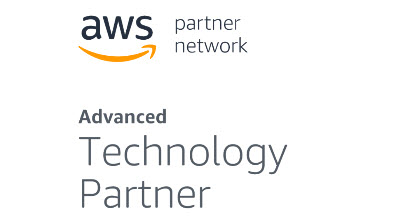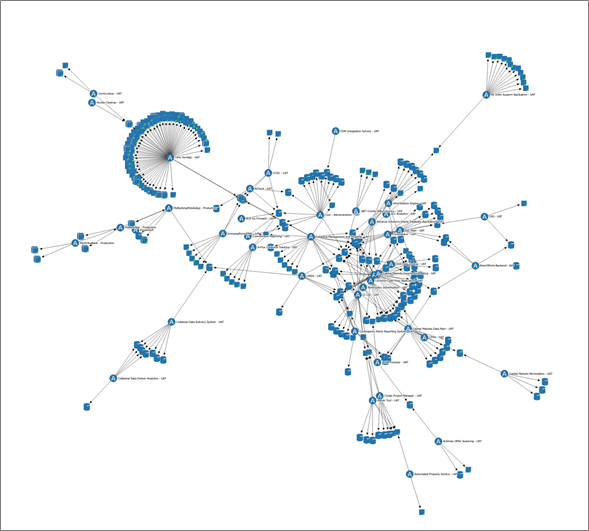Speed Matters. Introducing a New Migration Factory Using TransitionManager and CloudEndure Migration
 by Craig Macfarlane.
by Craig Macfarlane.
As organizations look for ways to accelerate their migration process, TDS worked closely with solution architects at AWS to build an exciting new toolchain combining the power of our TransitionManager software with AWS CloudEndure.
The results? A solution that leverages automation and streamlining of many of the sequential tasks involved in a complex migration process. And that means a migration factory that works — quickly, efficiently and without risk.
Here is the original blog posted on the AWS Partner Network (APN):
As the adoption of Amazon Web Services (AWS) continues to grow, the need for highly reliable workload migrations at an accelerated pace is paramount. This is particularly true for enterprises turning to AWS to host mission-critical and legacy applications.
Organizations need a solution that expedites the migration process, without introducing further risk.
In this post, we will introduce an integration of TDS TransitionManager with CloudEndure Migration, an AWS solution that accelerates cloud migration projects to AWS while reducing risk through automated processes.
By automating and streamlining the sequential tasks of migration, we can create a factory-like production line, or “migration factory,” to achieve these goals.
Transitional Data Services (TDS) is an AWS Partner Network (APN) Advanced Technology Partner that provides the TransitionManager software-suite, a purpose-built software-as–service (SaaS) solution on top of the AWS platform.
TransitionManager is designed to improve the entire end-to-end process of data center and cloud migration projects.
Background
As companies accelerate cloud adoption, key objectives must be accounted for during the migration:
- Accelerate the AWS migration process.
- Automate and simplify the CloudEndure workload movement of Linux and Windows systems.
- Reduce the risk of errors associated with manual tasks.
- Maintain compliance with appropriate regulations and policies through proper change management, testing, and approvals.
Cloud migration factories can also benefit from a new solution which:
- Assures successful outcomes (on time and on budget).
- Reduces time to value and avoids duplicative cost running both on-premises and cloud resources during the actual migration phase.
- Offers scalability of human resources to increase migration speed of re-host targets.
Migrations require a complex coordination of activities, performed in the proper sequence to assure overall project success. If one step is missed or performed out of sequence, it can result in a failed migration.
By integrating the cloud transport capabilities of CloudEndure Migration with the operational oversight of TransitionManager, users can move workloads more quickly, with less risk of rollbacks.
Example of an Orchestrated Migration
Let’s go through the steps for creating an automated migration pipeline, or migration factory, using TransitionManager and CloudEndure Migration.
Step 1: Understanding Your Environment
During the assessment phase and planning/design phase, understanding the environment is the first step in creating a migration plan.
A core function of TransitionManager is the ability to import and extract, transform, load (ETL) data from multiple sources. Using TSO Logic, RVtools, Excel spreadsheets, CMDB databases, or other discover tools, these data sources can be imported to the TransitionManager database.
This allows you to:
- Build an actionable view by aggregating key data points from the multiple sources in your environment.
- Pre-determine portable workloads from the aggregated data.
- Analyze the inter-dependencies between applications, or blast radius, of workloads visually before making accidental changes that could lead to service interruptions.
- Migrate to AWS with speed, taking advantage of TransitionManager’s direct integration with CloudEndure Migration.
- Do all of this while reducing risk.
Step 2: Building Your Actionable Data View
First, we need an actionable data set from which to make migration decisions.
Let’s ingest key data elements from RVTools to describe our virtual infrastructure, a cost analytics platform like TSOLogic, and our CMDB to build our application to infrastructure relationships
It’s worth noting there is no development time required to create or alter these ETL scripts to your needs.
- First, upload the files to the TransitionManager instance.

- Select your ETL script that will be used to map, transform, and load the data into the platform.

- Press the Import button and observe the results table.

After you’ve completed the data aggregation and ingestion from all of your data sources, your end result is an actionable, visualized view highlighting key data elements required to make quick migration choices.
This interactive map within TransitionManager shows the high-level diagram of all servers and inter-dependencies from the import of the discovery data.
Figure 1 – Dependency Analyzer Map.
Step 3: Filtering and Selecting Workloads Matching Your Rehost Migration Pattern
The dependency map in Figure 1 above is great for a high-level overview, but our initial goal is to segment the environment and find those highly portable workloads we can rehost in the cloud and show progress quickly.
Key properties to filter on can include both technical and business metrics, such as:
- Source virtual machine’s (VM) operating system compatibility with AWS.
- Source VM’s hypervisor compatibility with rehosting tool (CloudEndure Migration is compatible with any source hypervisor).
- Business unit flexibility and willingness to use and migrate to cloud services.
- Inter-dependence of the source workload with other systems.
- Non mission-critical workloads (Dev/Test/QA environments, for example).
- Compliance or regulatory workloads (PII, PCI, etc.).
To get started, open the saved view called Highly Portable Rehost Candidates and view the results.
In this example, there are more than 300 rehost candidates identified based on just a few filterable parameters that we defined.
We took that massive environment map of our IT assets and created a segment from which we can focus and start to make progress towards the migration phase.
Figure 2 – Highly portable rehost candidates.
Looking at one of the servers by clicking on the workload name in the filter, we can see what data points were aggregated earlier to further evaluate if this is a good rehost candidate.
By right-clicking on any asset in the map, you can quickly see key data points that were aggregated to further evaluate whether you should rehost this workload to the cloud.
Figure 3 – Server detail when selecting “Show Asset” in the Dependency Analyzer Map.
After a quick discussion with the migration team and application owner, we will tag this workload with the “Rehost:CloudEndure” tag.
Because we have aggregated the right data in one place, we can streamline the workload selection and placement process without having to bounce around to multiple tools and attempt to re-organize massive data sets to make decisions.
Step 4: Migrating Workloads to AWS
As a final step, we will migrate this selected workload to the cloud by integrating TransitionManager with CloudEndure.
By tagging “TDS-Web024” with the Rehost:CloudEndure tag, we placed the workload in scope of the “Rehost with CloudEndure” workstream automation template.
Now, let’s browse to the template and review the workstream.
The red highlights in the Task Graph below indicate tasks that make API calls to a CloudEndure endpoint.
Figure 5 – Task Graph in TransitionManager.
The first task (the bubble filled in green) is a for a human to execute. The owner of the workload is notified to approve the workload for migration to AWS.
After the owner signs off, TransitionManager automatically installs the CloudEndure agent on our “TDS-Web024” in our source environment via API call.
The actual code snippet is:
Next, an automated task runs to check the status of the CloudEndure storage replication process from the source environment to your target Amazon Virtual Private Cloud (VPC).
In the CloudEndure console, the workload is showing fully replicated to AWS, and it’s now ready to be launched or test launched.
Figure 6 – CloudEndure console.
We complete the workstream by reaching out to CloudEndure via API to cutover the workload so that it’s running live in our VPC target, with an API call such as:
An engineer or app owner then tests the application running in the new AWS environment. Finally, we shut down the source workload and complete the migration activity.
Once you are comfortable with the automated process and approval steps, these tasks can be scheduled and repeated ad-infinitum, and run in parallel to create a high-volume, high success rate migration project with minimal manual interaction.
Each application can be assigned its own owner, approvers, dependent tasks, target environments within the AWS Cloud, and its own schedule for change management and approved move windows.
Summary
In this post, we walked you through a new approach to large-scale migrations to AWS that drives efficiency and significantly accelerates the process while reducing risk and uncertainty.
By using a central planning and orchestration platform, you can quickly aggregate your team knowledge and work more efficiently together to develop approaches consistent with your business needs and IT capabilities.
This integrated solution of TransitionManager and CloudEndure offers:
- Accelerated cloud migrations.
- Improved overall planning and execution efficiencies.
- Rapid achievement of project milestones.
To learn more about TransitionManager or CloudEndure Migration, check out AWS Marketplace.
This blog, Creating a Migration Factory Using TransitionManager and CloudEndure Migration by By Craig Macfarlane, CTO at TDS, and Jon Keeter, Sr. Solutions Architect at AWS, originally appeared on AWS Partner Network (APN) Blog.





